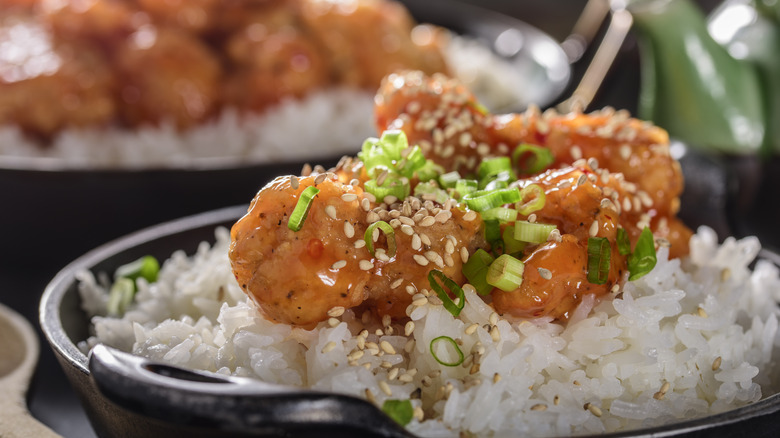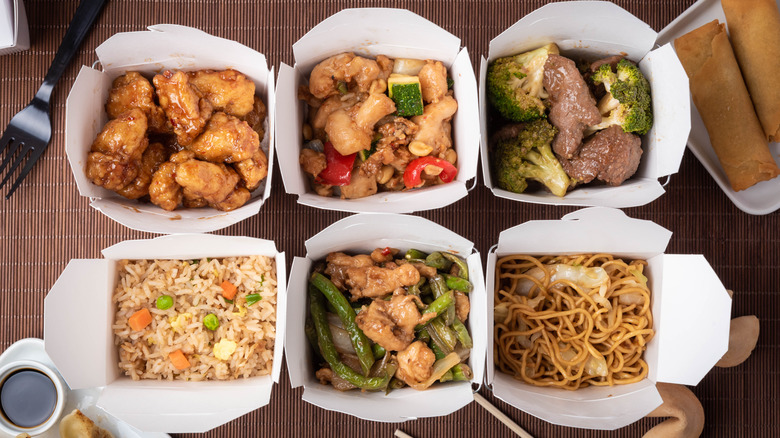The Real Origin Of Orange Chicken Is Probably Not What You Think
Orange chicken is among the most popular staples on the menu at Chinese restaurants in America. Why not in China, you might ask? Well, because orange chicken isn't Chinese food at all. In fact, there's a distinct difference between Chinese food and Chinese American food, and orange chicken exemplifies the latter.
Originating in 1987, orange chicken is not nearly as old as Chinese American cuisine but encompasses all of the characteristics of Americanization; spicy, citric, bone-in chicken dishes popular in China transformed into boneless, battered, and deep-fried chicken nuggets smothered in a sugary sweet and sour orange glaze.
The dish was invented by Andy Kao, a Tawainese-born, French-trained chef working for the iconic Chinese takeout chain Panda Express. According to Panda Express co-founder Andre Cherng, orange chicken was an adaptation of General Tso's chicken, another Panda Express invention. Kao was inspired by a flavorful, sour tangerine chicken dish from China's Hunan province, which he began serving as a bone-in specialty at the Panda Express kitchen in Hawaii to wide acclaim. However, once he applied the boneless, battered, and fried preparation of General Tso's chicken to the dish, orange chicken became the quintessential staple it is today.
Not only is it on practically every Chinese takeout menu, but it's also sold as a frozen dinner product in grocery stores and even served as a school lunch in government nutrition programs across the nation. It's also been adapted into countless simplified homemade recipes like this Tasting Table recipe for baked orange chicken.
Orange chicken reflects Chinese American food history
While inspired by authentic Chinese flavors, Chinese American cuisine is the epitome of East meets West and the 160-year-old prototype of fusion cuisine between the two nations. It began with the first mass migration of Chinese immigrants to the West Coast to work in California's gold mines in the mid-1800s. Craving a taste of home, Chinese miners erected chow chow houses where they attempted to recreate familiar Chinese dishes with American ingredients and leftover scraps available to them at the time. Hence, the first Americanized Chinese food was called chop suey, meaning leftovers in Chinese.
Despite racist and xenophobic sentiments towards the Chinese, chop suey houses garnered popularity over the next century. However, Chinese American food as we know it today didn't come to fruition until the second large wave of immigration that occurred in the 1960s. The newer generation of immigrants hailed primarily from Taiwan and Hong Kong, but they popularized the fried, sweet and sour, and spicy and sour dishes characteristic of the Hunan and Sichuan provinces. It's fitting, then, that orange chicken was the creation of a Taiwanese American's interpretation of a classic Hunan recipe.

